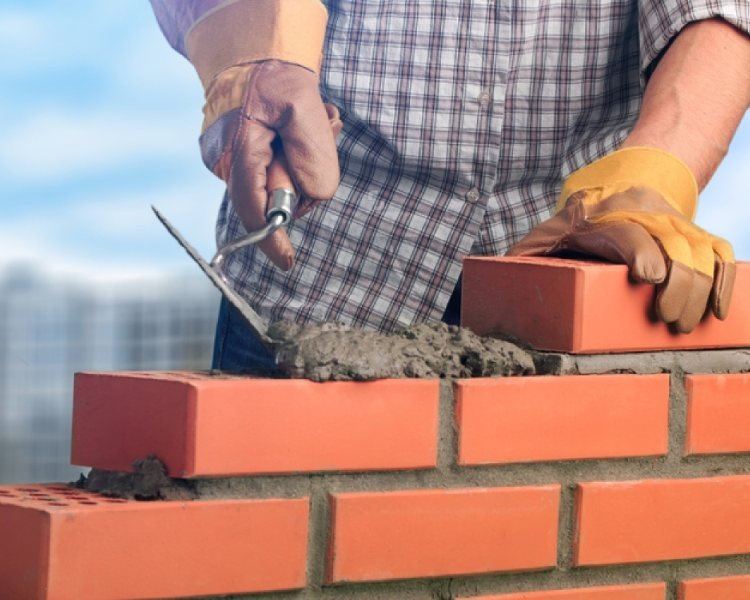Opening the Tricks of Lasting Masonry Building Practices for Eco-Friendly Structures
In the realm of contemporary building, the quest of sustainable methods has actually come to be critical. Among the myriad methods to eco-friendly building, sustainable masonry building stands out as a tried and true and durable approach that holds a wealth of untapped capacity. From the choice of materials to innovative construction techniques, the keys to accomplishing sustainability within stonework building and construction are complex and interesting. By exploring the benefits, materials, techniques, and future fads of sustainable masonry, a deeper understanding of how these practices can form the future of eco-friendly buildings emerges.
Advantages of Lasting Masonry Construction
Embracing lasting masonry building methods not only lowers ecological effect but also offers lasting financial benefits to building contractors and areas. By utilizing products like recycled bricks, blocks, and stones, contractors can substantially lower the carbon impact of their jobs while advertising resource efficiency. In addition, sustainable stonework building and construction strategies, such as appropriate insulation and thermal mass residential or commercial properties, can boost energy performance within structures, bring about decreased functional costs gradually.
In addition, the sturdiness and strength of masonry frameworks add to long-lasting economic benefits. Buildings built utilizing lasting masonry methods usually need less repair and maintenance, converting to cost savings for contractors and homeowner. The long life of stonework materials likewise guarantees that structures stay stable and secure, minimizing the need for regular improvements or replacements.
Eco-Friendly Masonry Materials
Utilizing eco-friendly stonework materials is a critical step in the direction of enhancing the sustainability of construction practices and reducing environmental influence while making best use of lasting economic benefits. Lasting masonry products are sourced, created, and made use of in a manner that reduces total environmental influence. Products such as recycled bricks, reclaimed stone, and sustainable cinder block are becoming progressively prominent selections for eco-conscious builders. Recycled bricks, for instance, not just draw away waste from land fills yet likewise require much less power to produce contrasted to new bricks. Reclaimed rock offers an unique aesthetic charm while reducing the need for brand-new quarrying. Lasting concrete obstructs include recycled aggregates and might include improved insulation residential properties, adding to energy effectiveness in structures.
Additionally, natural products like adobe, rammed planet, and straw bales supply excellent thermal mass residential or commercial properties, lowering the need for home heating and cooling down power. These products are typically locally offered, advertising local economies and lowering transportation-related carbon emissions. By selecting environment-friendly masonry materials, building tasks her explanation can considerably reduce their ecological footprint and contribute to the development of much healthier, more sustainable developed environments.
Energy-Efficient Masonry Methods
Power performance plays a vital role in improving the sustainability of masonry building and construction methods. By implementing energy-efficient stonework techniques, contractors can dramatically minimize the overall energy usage of a structure, leading to reduced functional prices and a smaller sized environmental impact. One essential energy-efficient stonework technique is using thermal mass, which entails integrating dense materials like concrete or brick right into the building's structure to soak up and keep warmth. This helps regulate interior temperature levels, minimizing the need for mechanical home heating and cooling down systems.

Innovations in Sustainable Stonework
Current developments in sustainable stonework methods have produced ingenious methods that are improving the building market. One such innovation is the visit this site advancement of self-healing concrete, which uses microorganisms installed within the concrete to recover fractures autonomously. This innovation not only decreases upkeep prices yet also boosts the toughness of stonework frameworks, adding to their sustainability.
One more significant technology is using recycled aggregates in stonework building and construction - masonry contractor. By integrating products such as smashed ceramic waste or recycled glass right into concrete mixes, building contractors can reduce the ecological effect of construction jobs while keeping structural stability. This technique not just diverts waste from garbage dumps however additionally saves natural deposits, making it figuring concrete a key innovation in sustainable masonry building
In addition, the assimilation of digital layout tools, such as Structure Details Modeling (BIM), is changing the method stonework frameworks are prepared and constructed. BIM permits even more exact computations, minimized material waste, and enhanced energy effectiveness, ultimately bring about even more lasting structure practices. These technologies jointly represent an encouraging future for lasting masonry building in the period of green buildings.
Future Trends in Stonework Sustainability
With the ingenious strides made in lasting stonework methods, the future trends in stonework sustainability are positioned to more transform the construction market. One of the essential fads shaping the future of stonework sustainability is the raised assimilation of technology. Developments such as Structure Information Modeling (BIM) and virtual fact simulations are being utilized to maximize stonework building and construction processes, resulting in reduced material waste and enhanced power performance in buildings.
Moreover, the advancement of novel lasting materials is readied to play a significant role in enhancing the eco-friendliness of stonework building. masonry contractor. Advancements like self-healing concrete, recycled accumulations, and bio-based binders are acquiring traction for their capacity to decrease ecological influence while keeping structural honesty

Final Thought
In final thought, sustainable masonry building techniques supply numerous benefits for environmentally friendly structures. masonry contractor. Technologies in sustainable stonework are continuously being created to even more improve the environmental performance of buildings.